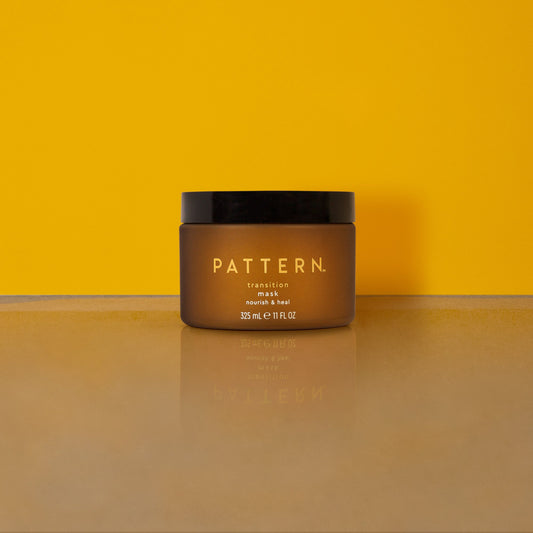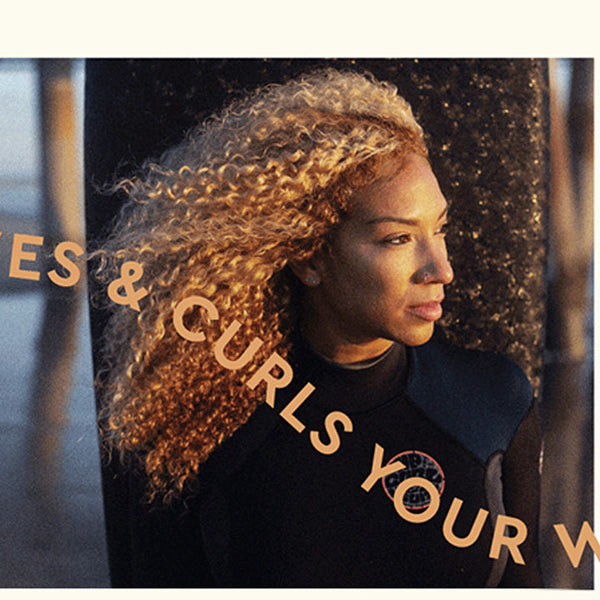By Adriane Jamison
What a predicament we find ourselves in. (FYI, if you’re reading this at a later time, we are in the middle of the COVID-19 pandemic. We’ve been home for more than a month at this point. Dusty times, my friend. Truly dusty times.) We’re being responsible humans by social distancing and only essential businesses are open which means salons are closed. So if you normally go to the salon to get your new growth relaxed and don't want to relax it on your own (which I strongly advise against, unless you are a professional), congratulations: you are officially transitioning. Whether you want to or not. But don't fret: I transitioned by choice back in the olden days of 2018, so I decided to share some of the tips that helped me.
A bit about my experience.
I’ve done the big chop on my type 4 curls many times in my life but have always put a texturizer in my hair immediately post-chop. This last time, however, I decided to transition my hair from relaxed to natural without the big chop. I cut my sides short and left my permed hair long at the top. A cute little tapered situation, which I loved. Except I began to experience breakage because I was treating my new growth and my permed ends the same. And I learned quickly that what was good for one wasn’t the best for the other. So I set out on a trek across the interwebs: on a quest, if you will, to not totally jack my hair up. Now I’m no expert, but below are the tips that helped me transition my hair with less breakage.
Best Tips for Transitioning Hair
-
Don’t rush!
- Just like the song says (but without the unrealistic time lapse of the TikTok challenge)! Caring for your hair, especially transitioning or natural hair, takes time. More time that you think. You now have natural roots and relaxed ends, aka hair that is confused. Rushing the below tips can cause unnecessary natural hair breakage, so take the time to follow them gently and lovingly.
-
Moisture Moisture Moisture!!
- You need moisture, moisture, moisture, and more moisture. Highly moisturized and highly favored IS the wave. Natural hair loves water (yes, water. I was shook when I learned this.) for moisture, but relaxed hair not so much. This is where I began my search for the best products for transitioning from relaxed to natural hair and PATTERN became a godsend for me. The Heavy and Intensive Conditioners on wash day, plus the Jojoba Scalp Oil every day really helped to keep both my natural hair and relaxed hair moisturized and stopped excessive breakage. If your hair likes protein, then try the Hydration Conditioner! Deep conditioning is GREAT for imparting much needed moisture to your relaxed ends and softening/fortifying your new growth. Take some time to massage the conditioner into your new growth and make it feel welcome. Then put on a shower cap and sit under the dryer for 20-30 minutes or do some quarantine cardio :) the heat lifts your cuticles and allows the moisture to penetrate into your hair. Trust me, your hair will love it!
-
Detangle your hair after deep conditioning but before rinsing it out
- This part is super crucial for retention. Where your natural new growth and your permed hair meet is the most delicate part of your hair in this entire scenario. It’s LITERALLY the make or break section. So I followed these below steps carefully and SLOWWWWLLLYYYYYYYY:
-
Finger detangle your new growth
-
The combs you use for permed hair ARE NOT the combs you use on natural hair. You could end up tearing your whole situation out from the roots. Finger detangling your new growth is great because you can feel any knots or tangles out better than a comb can, and you can adjust your pressure. Then you...
-
The combs you use for permed hair ARE NOT the combs you use on natural hair. You could end up tearing your whole situation out from the roots. Finger detangling your new growth is great because you can feel any knots or tangles out better than a comb can, and you can adjust your pressure. Then you...
-
Comb your hair from the bottom up
- Your new growth is a lot stronger than your relaxed hair, so combing with too much force will cause a ton of breakage. Comb your hair from the ends up while holding your hand right above where you comb. It takes much longer, but it will guarantee you the least amount of hair loss.
-
Find your fave transitioning hairstyle
- This is important because it will help your two different textures appear as one! Braid outs, twist outs, and bantu knots are the way to go. Well, bantu knots and I are like distant cousins that only see each other at the family Memorial Day barbecue because that’s about how often I achieve a good knot out, but I digress. And keep practicing :) But YouTube is a fantastic resource for tutorials of all styles done on all textures and transitioning stages!
-
Put it up!
- If none of the protective styles are working for whatever reason, then moisturize your hair and put it in braids, a bun, a wig or even a hat! That's also an opportunity for less manipulation, which means less breakage.
And that’s it! Maybe you’ll stick with the transitioning and grow your natural hair out, maybe do a chop, or relax your hair when you get a chance. Either way, gently moisturizing and caring for your natural hair texture is the key for whatever you decide. Here’s to juicy & joyful hair for all the hairs! Wash your hands :)
Here is my hair while I was transitioning:

Here is my hair after transitioning:

Adriane Jamison is on PATTERN’s Social & Community team based in Los Angeles.
We’d love to hear more on your hair journey. Please email us at hello@patternbeauty.com for a chance to be featured.



